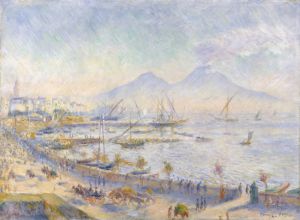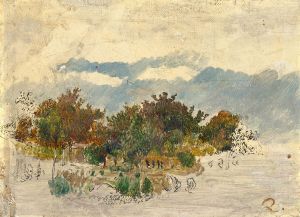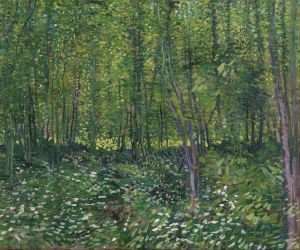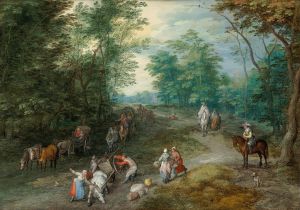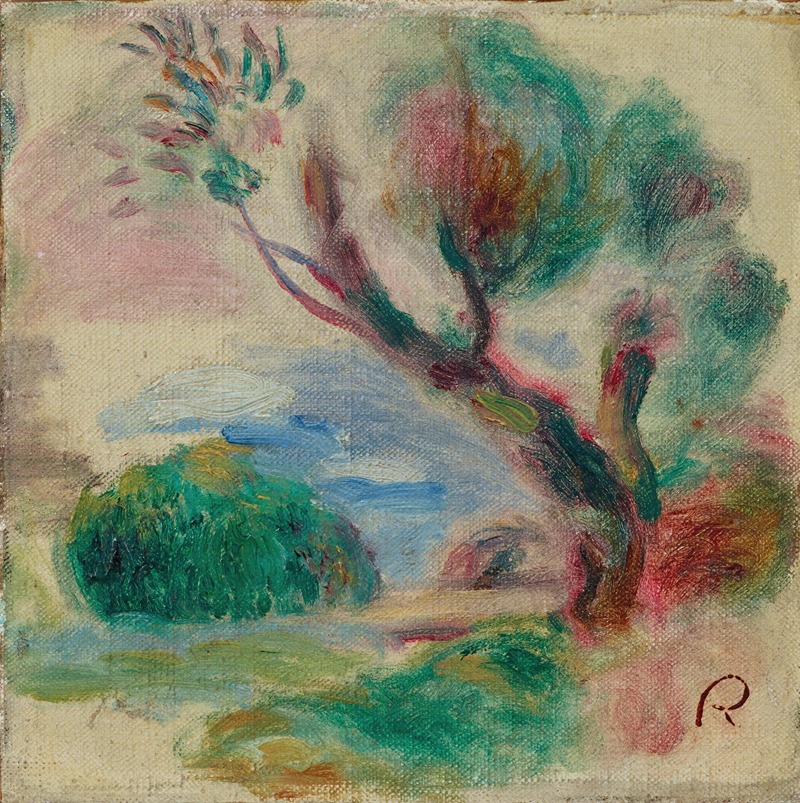
Arbre à Cagnes, au loin la mer
A hand-painted replica of Pierre-Auguste Renoir’s masterpiece Arbre à Cagnes, au loin la mer, meticulously crafted by professional artists to capture the true essence of the original. Each piece is created with museum-quality canvas and rare mineral pigments, carefully painted by experienced artists with delicate brushstrokes and rich, layered colors to perfectly recreate the texture of the original artwork. Unlike machine-printed reproductions, this hand-painted version brings the painting to life, infused with the artist’s emotions and skill in every stroke. Whether for personal collection or home decoration, it instantly elevates the artistic atmosphere of any space.
Pierre-Auguste Renoir, a leading figure in the Impressionist movement, is renowned for his vibrant light and saturated color, often focusing on people in intimate and candid compositions. One of his lesser-known works, "Arbre à Cagnes, au loin la mer" (Tree in Cagnes, the Sea in the Distance), exemplifies his later style, which evolved from the Impressionist techniques he helped pioneer.
Renoir painted "Arbre à Cagnes, au loin la mer" during his time in Cagnes-sur-Mer, a small town in the south of France where he spent the latter part of his life. This period was marked by a shift in his artistic approach, as he moved away from the fleeting effects of light and atmosphere that characterized his earlier work. Instead, he focused on more solid forms and a warmer palette, influenced by his admiration for classical art and his desire to capture the timeless beauty of his surroundings.
The painting depicts a serene landscape with a prominent tree in the foreground, set against the backdrop of the distant sea. The composition reflects Renoir's interest in the harmony between nature and the human experience, a theme that recurred throughout his career. The tree, with its lush foliage, serves as a focal point, drawing the viewer's eye into the scene and inviting contemplation of the tranquil environment.
Renoir's technique in this painting demonstrates his mastery of color and form. He employs a rich palette, with deep greens and blues dominating the canvas, punctuated by touches of warm earth tones. The brushwork is fluid and confident, capturing the texture of the leaves and the play of light on the landscape. This approach creates a sense of depth and movement, inviting the viewer to explore the scene further.
The setting of Cagnes-sur-Mer played a significant role in Renoir's later works. The town's picturesque landscapes and mild climate provided him with endless inspiration, and he often painted en plein air to capture the natural beauty of the region. His home in Cagnes, the Domaine des Collettes, became a central hub for his artistic endeavors, and many of his paintings from this period reflect the idyllic surroundings.
"Arbre à Cagnes, au loin la mer" is a testament to Renoir's enduring fascination with nature and his ability to convey its beauty through his art. The painting is a reflection of his mature style, characterized by a synthesis of Impressionist techniques and classical influences. It stands as a representation of his continued exploration of light, color, and form, even as his health declined in his later years.
Renoir's legacy as a master of Impressionism and his contributions to the art world are well-documented, and "Arbre à Cagnes, au loin la mer" is a valuable piece within his extensive body of work. The painting not only showcases his technical skill but also offers insight into his personal connection with the landscapes that surrounded him, highlighting the enduring impact of his environment on his artistic vision.










